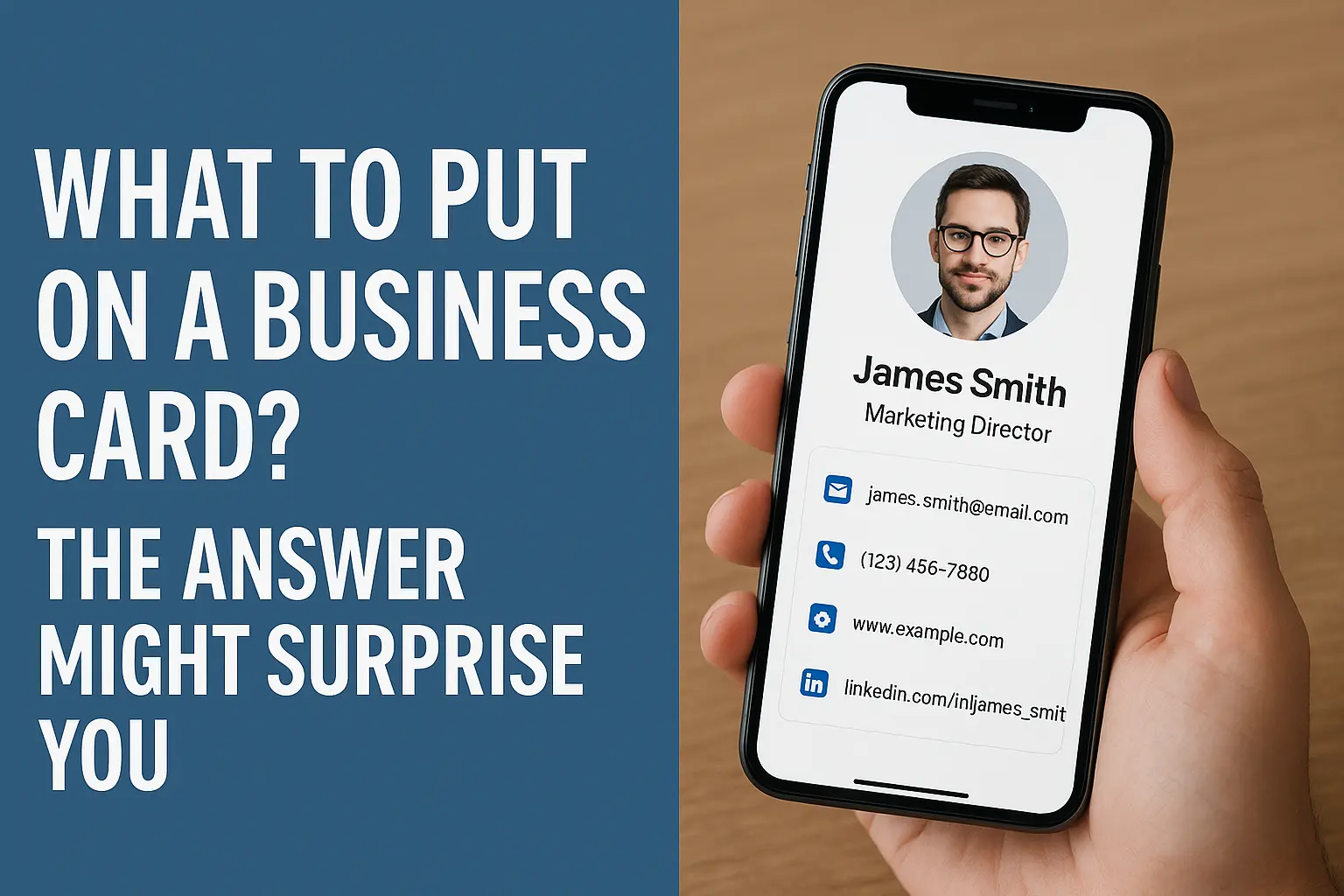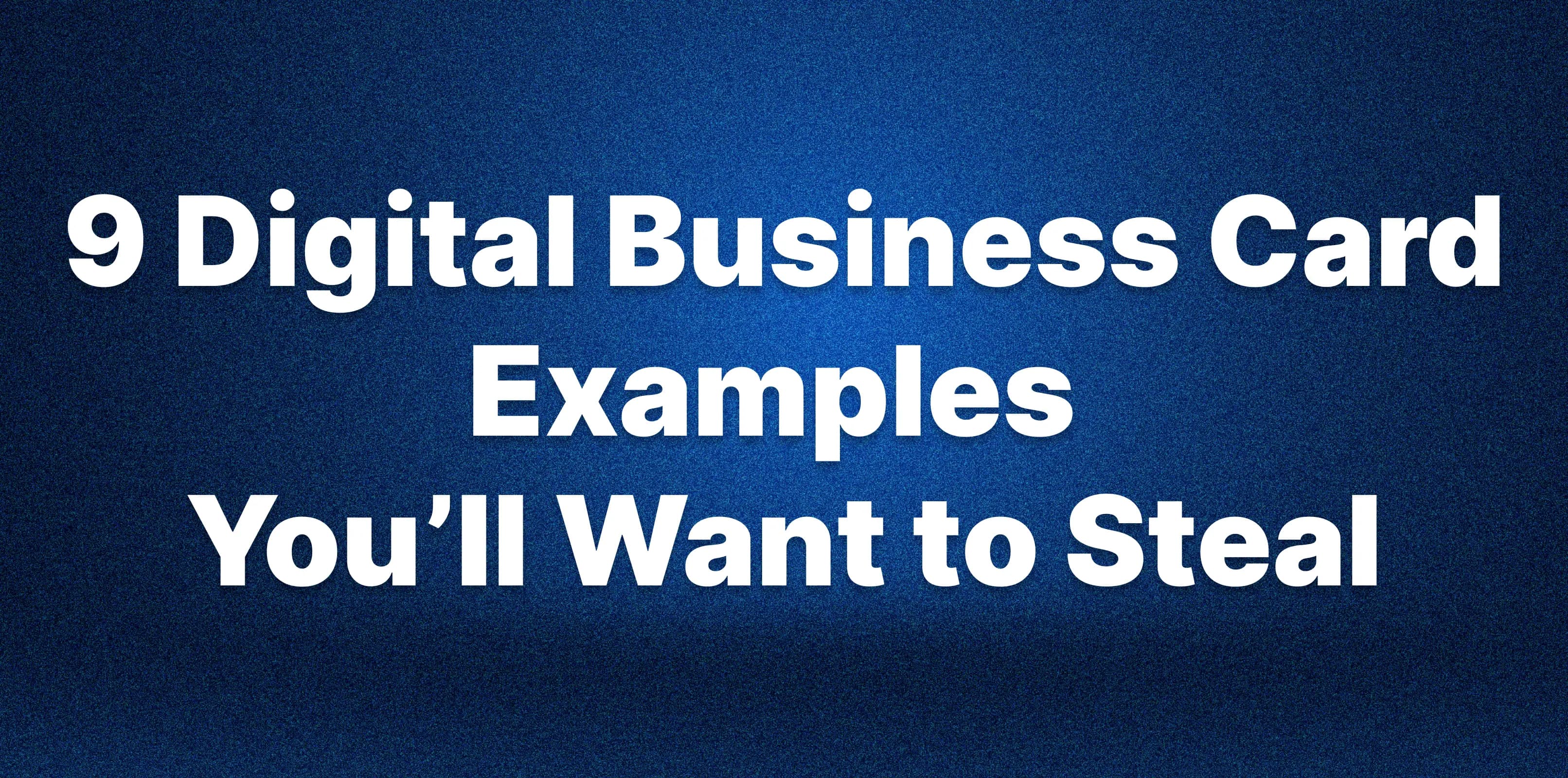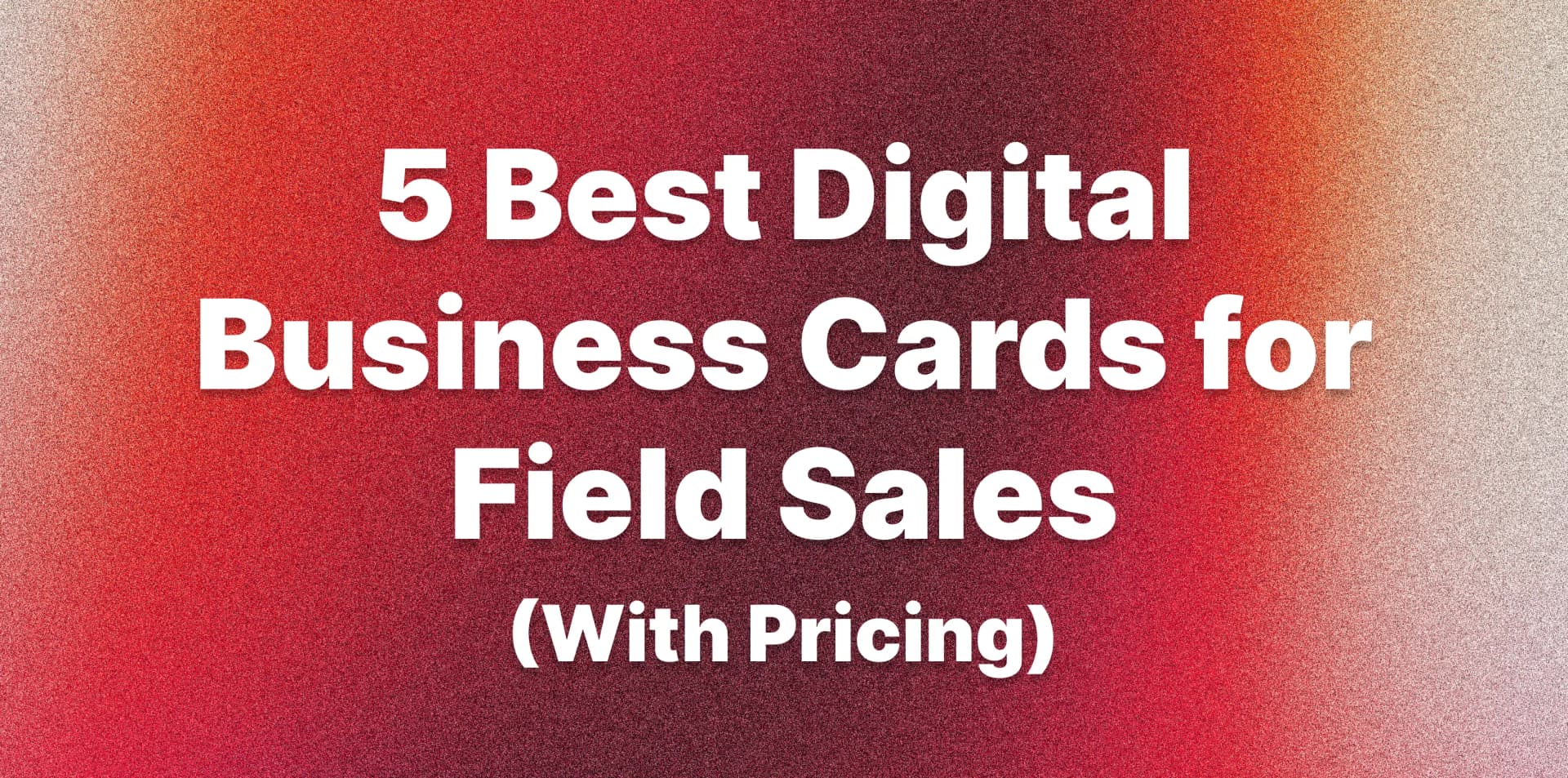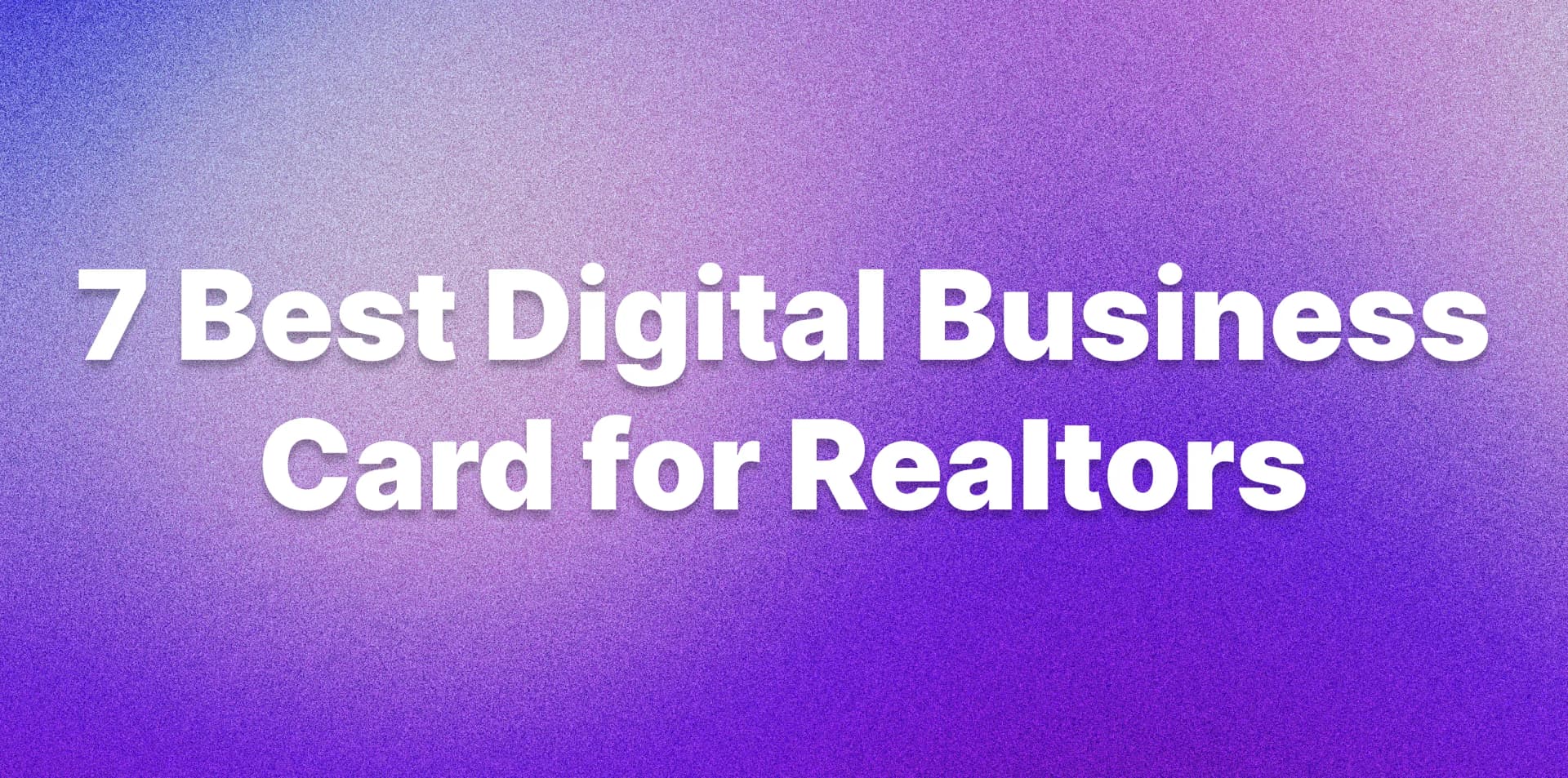What to Put on a Business Card? The Answer Might Surprise You

Searching for what to put on business card? In 2025, the real question isn’t which details to squeeze onto a tiny paper card – it’s whether you should still be using that paper card at all. Sure, a traditional business card can list your name, title, and contact info, but this old-school method comes with limitations.
Once it’s printed, you’re stuck with static information. If you suddenly need to change your phone number or job role, you’ll need to reorder new cards.
But the world is digital. We network on LinkedIn, schedule meetings via apps, and even look for partners online. It’s not what you put on a business card – it’s where you put it. By the end of this article, you’ll see why a digital business card can do far more for you than any paper card ever could.
The Paper Problem
Relying on paper business cards in a digital age creates more problems than you might realize. They have a nasty habit of becoming obsolete or irrelevant almost as soon as something changes – your title, your address, your website, etc. How many old cards have you tossed because the person changed workplace, or simply because you didn’t need the service at that moment?
Studies show 88% of business cards get thrown away in less than a week.
In fact, roughly 10 billion business cards are printed each year, consuming around 7 million trees annually, and the vast majority end up in the trash. All that printing and tossing creates mountains of waste, using up valuable resources like paper, ink, and water for almost no lasting benefit.
And if you’ve ever run out of cards at a crucial moment, or forgotten to carry them altogether, you know another pain point of paper: they’re only helpful if you have a stock on hand, which isn’t guaranteed.
Additionally, the medium paper is limiting your message.
So, What Do You Need to Put on a Business Card?
Let’s look at this question from another angle: What information do you actually need to share?
Whether you stick with paper or go digital, the core essentials remain the same. You’ll want to include:
- Your name
- Your organization or title
- Key contact details
Typically, a business card also includes your company name or logo, and often a physical address or location if relevant.
In today’s world, it’s also common to include a website URL or a LinkedIn link on your card, since your online presence is part of your professional identity.
But here’s the thing – if you’re only thinking in terms of a traditional card, you’re forced to prioritize a handful of details that fit in a 3.5x2-inch space. Modern networking often requires more context and more channels than a small paper card can accommodate.
You might have a portfolio of work to show, social media profiles to share, or a scheduling link so new contacts can easily book a meeting.
A static card can’t handle that. This is why the real question isn’t what info to print, but how to share important information in the best possible way. And that leads us to the more innovative solution.
Digital Business Cards Solve All That
Imagine a business card with no limits on content, that never runs out, and that can be updated anytime.
That’s what a Digital Business Card app offers.
By moving your card to your smartphone, you eliminate the physical constraints and headaches of paper. A digital card isn’t stuck in a drawer or tossed in a wastebasket – it’s always with you on your phone, ready to share via a quick link or QR code.
You’ll never be caught empty-handed at a networking opportunity because one digital card is all you need. Moreover, if your information changes, you can simply edit your digital card, and it instantly updates for everyone who has it.
Going digital also means you can share far more than just text. Your card can include links and media that enrich your introduction.
Instead of just a company name, why not link to your company’s website or your LinkedIn profile so people can immediately learn more about you?
One more huge benefit is the ability to include multiple links: your email, phone, LinkedIn, Instagram, and personal portfolio website – all in one place.
Finally, let’s not forget the cost advantages. One digital card can be shared countless times with zero printing waste, and you’ll never need to spend money on ordering packs of paper cards.
Digital business cards eliminate the static, limited nature of paper and replace it with something dynamic, versatile, and more innovative.
What to Put on a Digital Business Card
If you’re considering a digital business card (great choice, by the way), what information and content should you include on it?
The answer: everything that would go on a paper card, plus a whole lot more.
Start with the fundamentals: your name, title, company, and primary contact info (phone, email) should be front and center, just as they would on any card. These are the key pieces of information someone needs to remember who you are and reach you easily.
Here are some ideas, framed as benefits for you and your new contacts:
- Direct links to your socials: Include clickable links to your LinkedIn, Twitter, Instagram, personal website, or any other relevant profile. This saves the other person from having to search for you online – they can instantly connect with you on their platform of choice.
- Portfolio and media links: If your work is visual or creative, a digital card lets you show it off directly. You can add a link to your portfolio on Behance, Dribbble, and more.
- Custom design: Digital cards are highly customizable. You can change the colors, layout, and URL of your card to fit your brand.
- Tailored content for different situations: Because digital cards are easy to update (or you can even maintain multiple versions), you can adapt what you share based on purpose.
All these elements would be impossible to cram onto a traditional 3.5″ by 2″ card. But in a digital format, you have the freedom to share a fuller picture of who you are and what you offer. Just remember not to overload your digital card with too much at once – you’ll want to keep it organized and user-friendly.
Let’s summarize the key differences to highlight why going digital is the smarter move for every professional today.
Feature | Paper Business Card | Digital Business Card |
|---|---|---|
Can You Update It? | No, changes require reprinting. | Yes – edit anytime, instantly. |
How Much Info Fits? | Very limited. Just basics. | Unlimited – add links, socials, media. |
How Do You Share It? | Hand it out. Easy to forget or run out. | Share via QR, link, or NFC – always ready. |
Is It Interactive? | No – static text only. | Yes – tap to call, email, or schedule. |
Can You Track It? | No – once it’s gone, it’s gone. | Yes – get views and click analytics. |
Cost Over Time | Reprint costs add up. | One-time or low-cost, no reprints. |
Final Word
If you came here looking for a checklist of what to put on a business card, hopefully, you’ve got a better alternative. The essentials of your professional profile – who you are, what you do, and how to reach you – haven’t really changed. What’s changing is where and how you share those essentials.
A glossy cardstock card on someone’s desk can’t compete with a living digital profile that’s one tap away on their phone. Rather than printing yet another stack of paper cards, you can invest in a solution that grows with you and boosts your networking opportunities.
Create your digital card today with DigitalBusinessCard.com – the last business card you’ll ever need. It’s your professional presence, upgraded for the digital age. Your future contacts will thank you for it!


